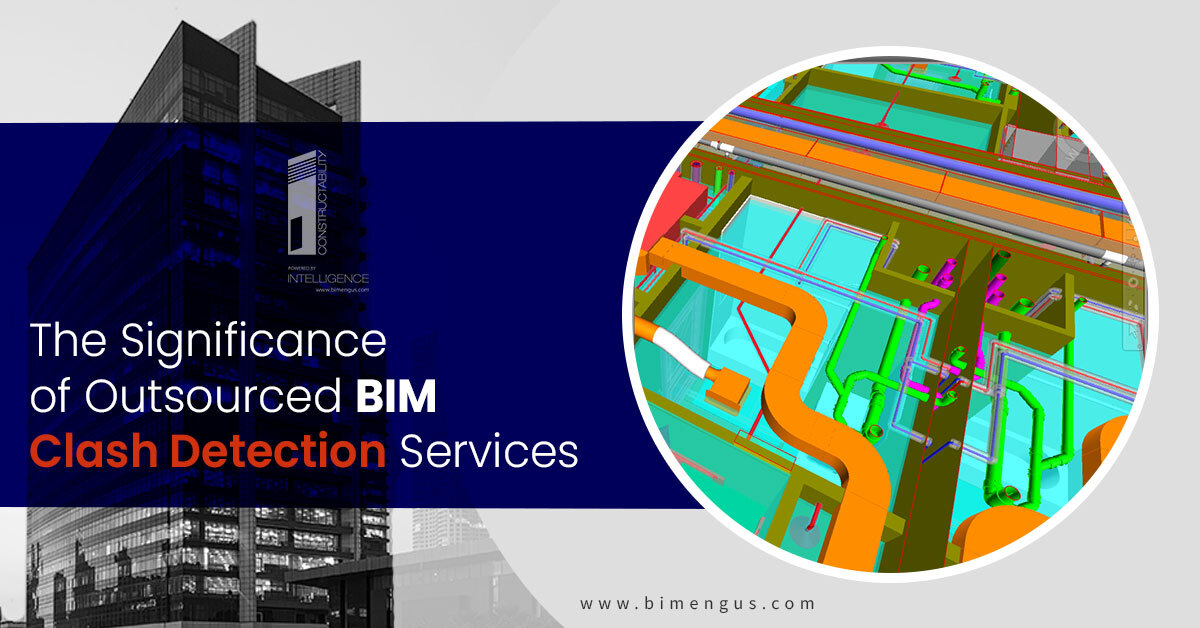The construction industry is undergoing a digital revolution, and at the heart of this transformation is Building Information Modeling (BIM). BIM is not just a buzzword; it’s a game-changer that offers a holistic and collaborative approach to construction projects. In this article, we’ll explore a crucial aspect of BIM—clash detection—and how outsourcing this service can significantly impact project success.
What is BIM Clash Detection?
Building Information Modeling (BIM) clash detection is a critical process in modern construction projects. It involves the use of 3D models to identify and resolve clashes or conflicts among various building components such as structural elements, plumbing, electrical systems, and HVAC. This process helps prevent costly errors, design inconsistencies, and construction delays.
BIM clash detection operates on the premise that it’s much more efficient to catch issues in the virtual realm rather than encountering them on the construction site. By simulating the entire project digitally, potential issues can be discovered and rectified before they become real-world problems.
The Benefits of BIM Clash Detection
The advantages of implementing BIM clash detection in construction projects are multifaceted. First and foremost, it leads to cost savings. By addressing clashes early in the design phase, you can avoid costly on-site modifications and rework. The efficient identification and resolution of issues also reduce construction delays, leading to projects being completed on time or even ahead of schedule.
Furthermore, BIM clash detection significantly enhances the overall project quality. It minimizes the risk of human error, ensuring that the building’s systems fit together seamlessly. This, in turn, enhances the safety and functionality of the constructed facility.
Collaboration is another key benefit. BIM clash detection encourages better communication and cooperation among various project stakeholders, including architects, engineers, contractors, and subcontractors. It promotes a culture of shared responsibility and problem-solving, which is vital for project success.
Challenges in In-House Clash Detection
While BIM clash detection offers numerous advantages, many construction firms face limitations when attempting to perform it in-house. One significant challenge is the requirement for specialized skills and expertise. Skilled BIM modelers and clash detection experts are not always readily available within an organization.
Another constraint is the necessary technology and software. Building and maintaining a high-quality BIM environment with the right software tools can be costly and resource-intensive. Smaller firms, in particular, may struggle to make this investment.
The Role of Outsourced BIM Clash Detection Services
Outsourcing BIM clash detection services offers a compelling solution to the challenges faced by construction firms. Outsourcing firms specialize in BIM and have dedicated teams with expertise in clash detection.
These outsourced teams bring state-of-the-art technology and software to the table, ensuring that projects benefit from the latest advancements in the field. Additionally, by outsourcing, construction firms can scale their clash detection capabilities up or down as needed without making significant investments in technology and personnel.
Outsourcing providers typically have a track record of successful projects and the experience to handle complex scenarios effectively. This level of expertise can be a game-changer for construction projects, especially when dealing with intricate, large-scale developments.
Key Considerations When Outsourcing Clash Detection
When considering outsourcing BIM clash detection services, there are essential factors to keep in mind. First and foremost, evaluate the outsourcing partner’s experience and reputation. Look for a provider with a proven track record of delivering high-quality clash detection services on time and within budget.
Additionally, consider the technology capabilities of the outsourcing firm. Ensure they have the latest BIM software and tools, and can seamlessly integrate with your existing project management systems.
Effective communication and collaboration are crucial in outsourcing relationships. Establish clear lines of communication and expectations with your outsourcing partner. Collaborate closely to ensure that your project’s specific needs and goals are met.
Conclusion
In conclusion, outsourced BIM clash detection services are a vital component of successful construction projects in the digital age. The benefits of early conflict identification, cost savings, improved project quality, and enhanced collaboration cannot be overstated. While in-house clash detection has its limitations, outsourcing provides access to specialized expertise and cutting-edge technology. By carefully selecting the right outsourcing partner, construction firms can ensure that their BIM projects proceed with efficiency, accuracy, and success. Consider outsourcing as a strategic move to elevate your construction projects to the next level.
